
Roger Group’s aviation operation is in the midst of a smooth personnel transition.
March 25, 2019
Bill Torphy has flown for Rogers Group his entire career, some 46 years, and has led the aviation operation since 1988. In addition to dual qualifications on the company’s Cessna Citation Latitude and Bell 206L4, he also holds an A&P license and Inspection Authorization (IA) certification.
Torphy and Director of Maintenance Greg Kulwicki have worked together for more than 31 years. While the Latitude is under warranty, Kulwicki inspects it daily and performs nearly all the maintenance on the helicopter himself. The two know Rogers’ frequent passengers by first name.
In August, Torphy will retire. Kulwicki is eligible to retire this year as well. And yet, despite how closely the flight department is associated with their leadership, Rogers’ executives aren’t worried.
“I’m not concerned at all about the continuity,” said Rogers’ vice president for people, Kye Hudson. “We’re very fortunate to have a team coming in that has the technical expertise and the customer service mindset we need.”
In a relatively short time (2016 to 2019), Rogers will replace all four of its aviation personnel. It’s a testament to how they’re managing that transition that the company anticipates no disruptions.
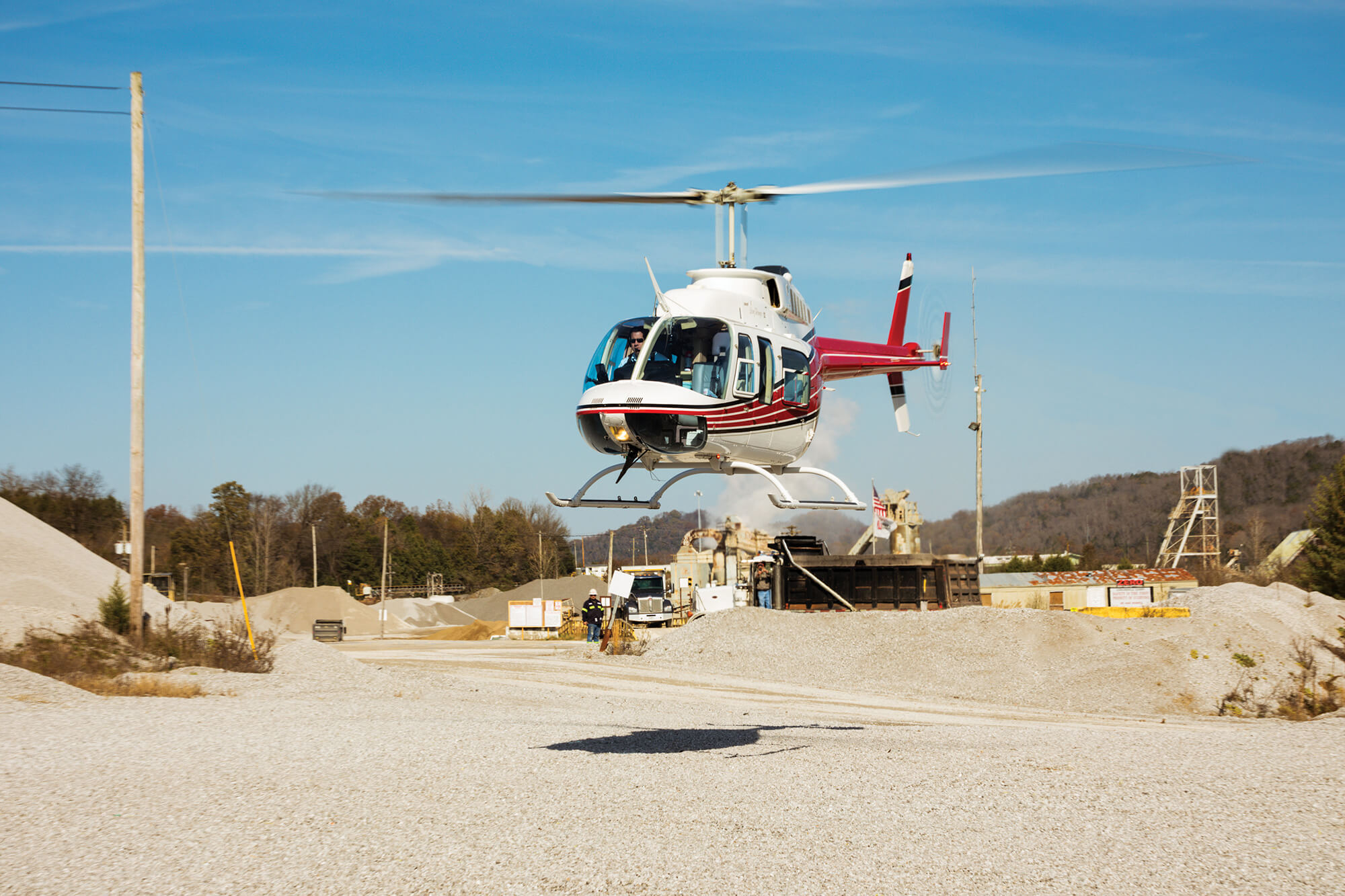
THE NEXT GENERATION
The pilot hired to take over for Torphy once he steps down is Myron Lasater, who has worked near Rogers Group’s Nashville headquarters for 30 years. Like Torphy, he’s an A&P and IA, so he can pitch in when Kulwicki needs a second pair of hands with maintenance tasks.
Lasater has held leadership roles before. He has 25 years with Part 91 operations, managed the FBO at Tennessee’s Lebanon Municipal Airport and until recently ran his own aircraft brokerage. In February 2018, when one of Rogers’ longtime captains took an airline job, Lasater was hired to fill that role and eventually replace Torphy.
“I’ve known Myron for over 20 years. He was a great choice to fill that immediate position and then be ready to step in when I retire,” said Torphy.
Rogers has undergone few leader-ship changes since the company was founded in 1908. The fourth generation of founder Ralph Rogers’ descendants still own and lead the building materials and construction company. The aviation operation has seen the same continuity. Formed in 1954 when Ralph Rogers bought a Twin Bonanza, the flight department has only had two directors in 65 years.
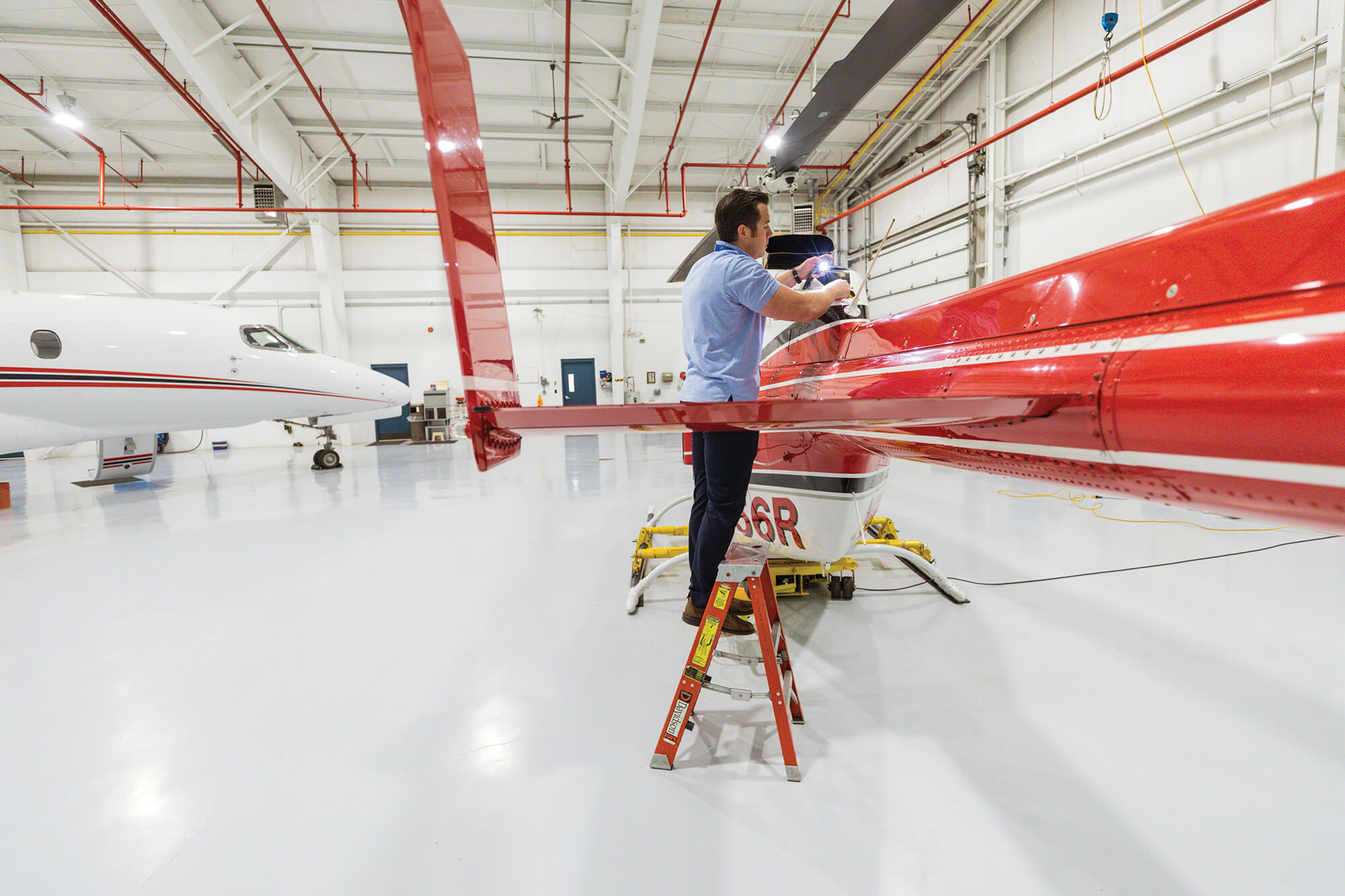
FAMILY BUSINESS
The company was founded in Bloomington, IN, where Ralph Rogers began crushing rock more than 110 years ago. By the time the business expanded into Kentucky and Tennessee, travel was taking up quite a bit of company officials’ time.
According to Torphy, in the 1950s Ralph Rogers said to his managers,
“We’ve got to have an airplane if we’re going to grow this company.” Nine years after that first airplane, they added a helicopter.
Today, the company has 70 quarries across 10 Midwestern and Southern states. They also do highway, bridge and construction, with more than 100 active job sites. With the Latitude, teams can visit multiple construction sites and quarries in one day. Both aircraft are used to pursue acquisition and development opportunities.
“Rogers is always expanding,” said Lasater. “They’re looking for new locations. Sales and marketing people use the airplane. Computer support people, safety personnel, purchasing managers… they all use the airplane.”
The helicopter is used for shorter-range missions, primarily to visit the quarries, so Rogers staff can land right on-site. Management teams visit the quarries to perform safety audits; engineering and HR teams also are frequent users. The helicopter also enables Rogers to perform aerial surveys of the quarries, often visiting several quarries in a single day.
‘BLEED ROGERS RED’
Like Lasater, helicopter pilot Adam DeFrank joined the flight department in 2018. The previous helicopter pilot, who had been dual-qualified on the Latitude and Bell 206L4, was hired away by an airline after 26 years with Rogers. With 4,000 hours on helicopters and more than 1,000 hours on Citations, DeFrank had the ideal skill set for Rogers.
“The helicopter flies about 100 hours a year or so, but the Latitude flies over 450 hours, so we need all three of our pilots to be able to fly fixed-wing,” said Torphy. “We used an aviation search firm to find a dual-qualified pilot, and were fortunate to get Adam.”
Right away, Torphy sent DeFrank to the Bell school in Dallas, then to Wichita to get his type rating on the Latitude and do his Garmin avionics certification. With DeFrank and Lasater’s technical skills established, Torphy has focused on training them to “bleed Rogers red.” That means emphasizing customer service, always putting safety first and communicating openly and often.
“Bill has a system that works,” said Lasater. “It’s proved itself in the success of the company and the success of the aviation department. Everybody keeps each other well-informed. The company, the pilots and maintenance know what each other are doing. It’s the same way in the quarries, because Rogers Group is so safety minded.”
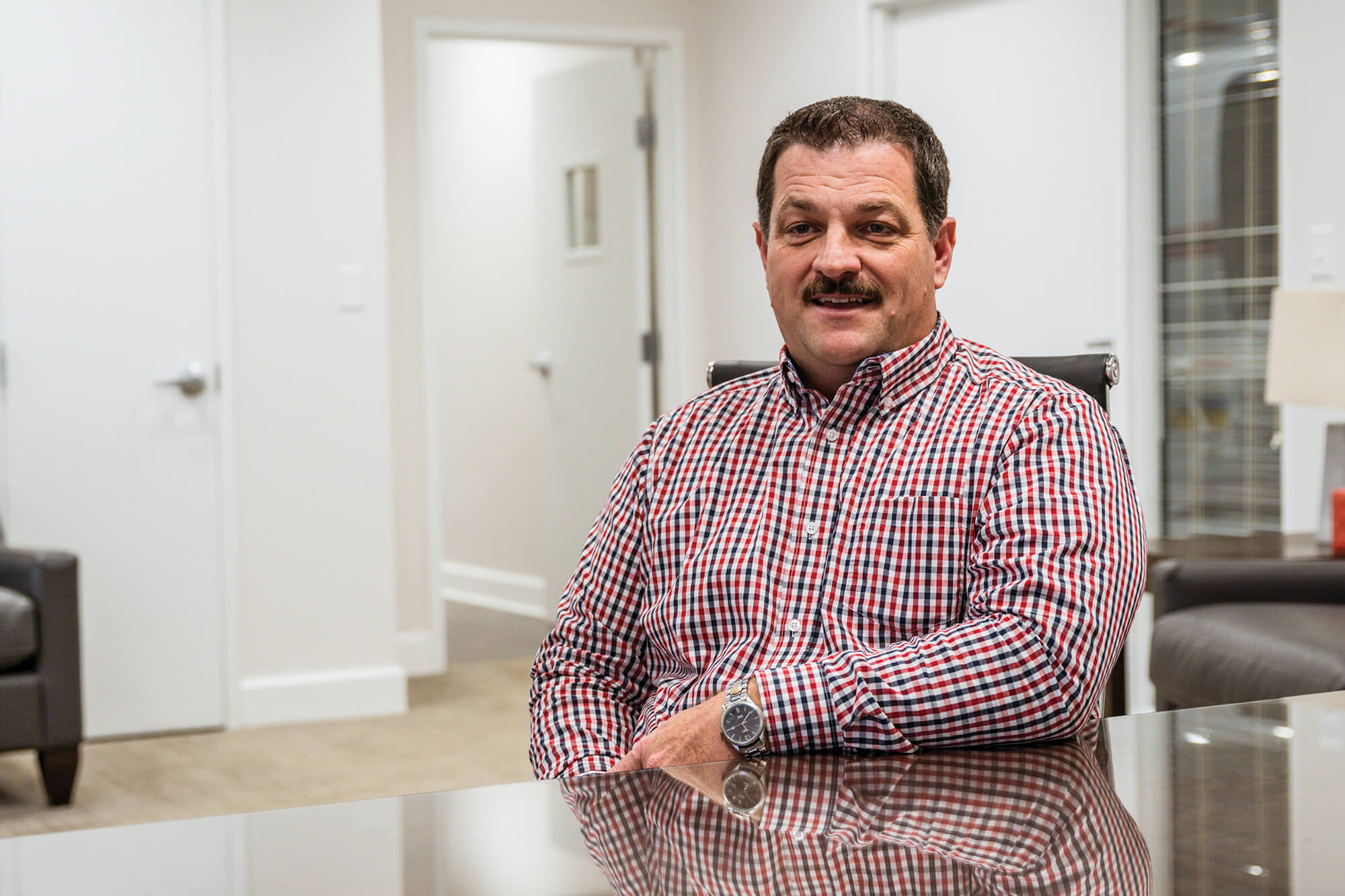
HANDING OVER THE REINS
After Lasater spent his first year learn-ing the flight department protocols and the expectations of Rogers’ passengers, Torphy focused on mentoring him in the director’s role he will soon take on.
“Until a few months ago, my title was chief pilot and director of aviation,” said Torphy. “After Myron had been on the job, I took that title and broke it in half. I made Myron chief pilot. He’s taking over the day-to-day operations more and more, and I’m going to start stepping away and coaching him.”
Lasater is now in charge of duty rosters and aircraft scheduling. He has primary responsibility for coordinating between the maintenance and flight functions, and together he and Kulwicki will hire a technician to replace the retiring director of maintenance.
Side-by-side with Torphy, Lasater is learning the budget process. Torphy has charged him with finalizing Rogers Group’s international procedures manual, and Lasater will also implement the department’s first safety management system. Most important, Lasater will lead the effort to replace Torphy, hiring a new, dual-qualified pilot. With that hire, all four aviation positions will have changed over since 2016.
While Torphy is looking forward to retirement, he plans to fly 40-50 hours a year for Rogers as a contract pilot. And he will be available to answer Lasater’s questions. “I’m just a phone call away.”
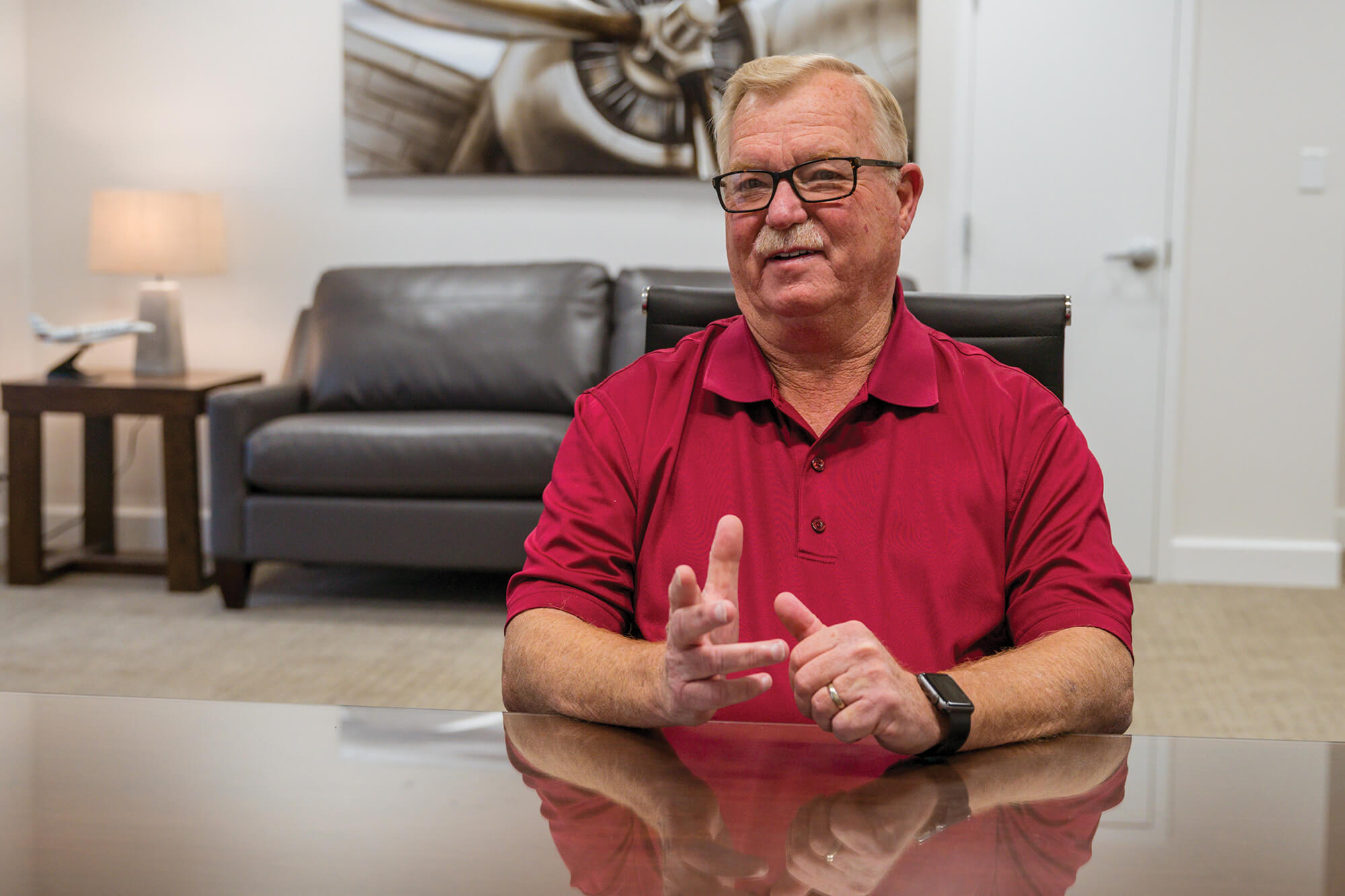
SERVING ON THE CESSNA 500/600/700 TECHNICAL SUBCOMMITTEE
Because he’s led a flight department for decades – an operation that’s flown several models of Cessna Citations – and because he has an A&P license and IA certification, Bill Torphy has a wealth of hands-on knowledge about that aircraft type.
That’s why Torphy, Rogers Group’s director of aviation, has been a valuable member of the NBAA Technical Subcommittee for Cessna Citation 500, 600 and 700 airplanes since 1994.
“I’ve always enjoyed not just the flying side, but also the mechanical side,” said Torphy. “There’s a couple of us on the committee who are both pilots and mechanics. We’re able
to help with understanding how the system, as it’s designed, will really be used in the cockpit.”
On the NBAA subcommittee, Torphy helped develop the MSG3 (maintenance steering group) program for the Citation Sovereign. Then, the subcommittee worked with Cessna to convert the maintenance programs for the Citation X, Excel and several other planes to MSG3. He also helped develop the maintenance program for the Latitude, which he now flies at Rogers Group.
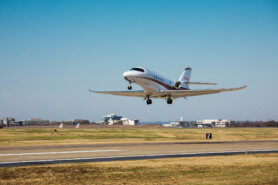
SNAPSHOT: ROGERS GROUP
Aircraft:
One Cessna Citation Latitude and one Bell 206L4.
Base:
Headquartered at Tennessee’s Nashville International Airport (BNA).
Personnel:
Three pilots, including a director of aviation who flies, and one director of maintenance


 International Business Aviation Council Ltd.
International Business Aviation Council Ltd.